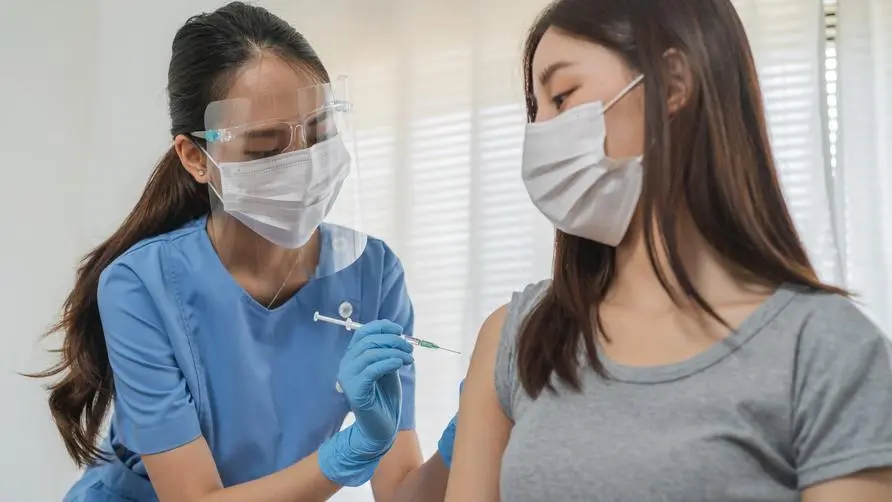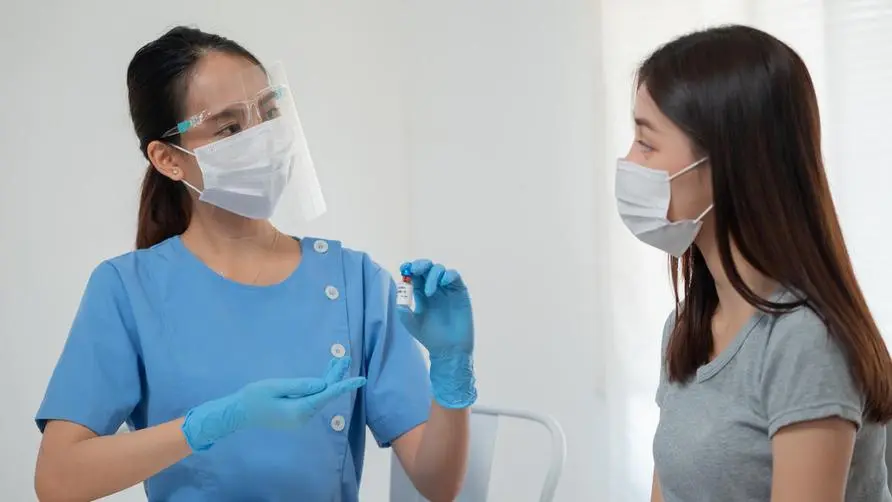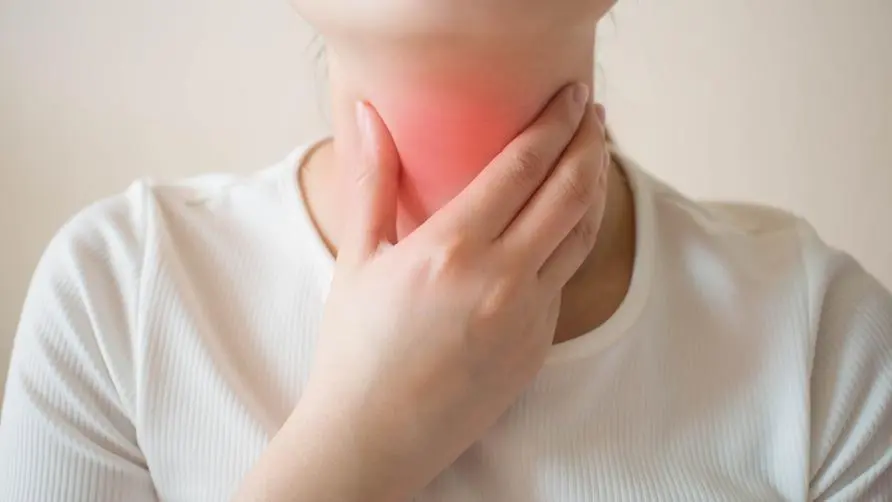Is HPV the ubiquitous hidden cause of head and neck cancer? The ratio of female to male is higher! Medical reveals 5 major risk factors

healthorn expert Q&A
Q: Women are at a higher risk of getting cancer from air pollution than men? What should we do to prevent air pollution from causing cancer?
A: There are many threats to the air in your home. In addition to smoking and burning incense, the easily overlooked “carcinogen formaldehyde” is the main source of indoor air pollution. The boards, sofas, mattresses, and curtains used for decoration will emit a large amount of formaldehyde, further causing the indoor formaldehyde to exceed the standard. Especially for women, children and people prone to allergies, if they live in a space with excessive formaldehyde for a long time, it will increase the frequency of allergies and skin inflammation, and may lead to female infertility, childhood leukemia, cancer and other symptoms.
To solve the problem of formaldehyde poisoning, it is recommended to seek formal formaldehyde removal companies to carry out indoor formaldehyde removal projects. Long-term formaldehyde removal projects usually take more than 3 days to recycle formaldehyde deep inside furniture and decorations using standard construction methods. And it is effectively decomposed to ensure that the formaldehyde concentration in the space is lower than the safe value for a long time. When selecting a manufacturer, special attention should be paid to choosing a manufacturer with a long-term warranty to ensure healthy and non-toxic indoor air quality for a long time and reduce the risk of cancer.
Men’s risk of head and neck cancer is ten times higher than women’s! Medical reveals 5 major risk factors
Head and neck cancer is an important killer affecting the health of both men and women. Taiwanese and foreign celebrities such as Michael Douglas, Ryuichi Sakamoto, and the late Sanli Chairman Lin Kunhai are all patients with head and neck cancer. Head and neck cancer in Taiwan ranked sixth among the top ten cancers in 2020, and ranked third among male cancers. The Taiwan Otolaryngology-Head and Neck Surgery Society pointed out that head and neck cancer is particularly common in middle-aged men aged 40-60, and men with head and neck cancer are more likely to develop. The risk of cancer is 10 times higher than that of women.
Dr. Chen Shicheng of the Taiwan Otolaryngology-Head and Neck Surgery Association said that head and neck cancer is a collective term for upper gastrointestinal and upper respiratory tract cancers. It is mainly divided into oral cancer, oropharyngeal cancer, hypopharyngeal cancer and laryngeal cancer according to the location of occurrence. The five main risk factors for head and neck cancer include: betel nut, tobacco, alcohol, genes, and HPV (human papillomavirus) infection. In addition, gastroesophageal reflux, a diet high in fat and low in fruits and vegetables, human herpes virus (Epstein-Barr virus), occupational factors, air pollution, and radiation may also be potential risk factors.
“It is worth noting that even if you do not smoke or drink, you may still be infected with head and neck cancer. The number of head and neck cancers caused by HPV infection in Taiwan is increasing year by year!”
Dr. Chen Shuicheng pointed out that according to US statistics, 21%-70% of head and neck cancer-related cancers are caused by persistent HPV infection, especially in the oropharynx, where the risk of cancer is the highest. In Taiwan, about 30% of oropharyngeal cancers are caused by persistent HPV infection. Relatedly, the proportion of men carrying HPV in the oropharynx is higher than that of women, but the proportion of antibodies produced after infection is lower. If the body cannot clear it on its own, it increases the risk of cancer.
1 in 5 people is infected with HPV in the oropharynx! The risk of female-to-male transmission is higher
Lou Peiren, chairman of the Taiwan Otolaryngology-Head and Neck Surgery Association, pointed out that human papillomavirus can be divided into highly oncogenic virus types and low oncogenic virus types. According to the latest WHO report in September 2023, every 5 men over the age of 15 worldwide One person in every 100 years is infected with a highly cancer-causing HPV virus type. Highly oncogenic HPV types are related to cervical cancer, oropharyngeal cancer, penile cancer, and anal cancer, while low-carcinogenic HPV types may cause cauliflower and skin warts.
“We have seen that the number of cervical cancers is declining year by year, but male head and neck cancers are increasing. A large part of the reason is related to the low proportion of women receiving the HPV vaccine and men receiving the HPV vaccine!”
Chairman Lou Peiren said that according to research, about 7.3% of HPV infections are transmitted from men to women, while the rate of HPV infection from women to men is as high as 12.3%. Since the HPV virus may be latent in the throat, the latest survey data found that 1 in every 50 healthy adults in Taiwan is infected with HPV in the oropharynx, indicating that the risk of HPV virus exposure is hidden in the environment, and it is not just through sex as popular belief Behavioral contagion.
Chairman Lou Peiren also pointed out that the peak age groups of Taiwan’s oropharyngeal HPV infection rate are 31-40 years old and 50-60 years old. The infection rate of men aged 51-60 years old is about 3.8%, which is 1.6% higher than that of women. twice as much. Even benign papilloma, once it grows in the throat, requires regular surgical removal to avoid affecting breathing and swallowing functions.
When HPV infects the oropharynx or causes tonsil cancer, patients not only need to undergo chemotherapy and radiotherapy, but may also face large-area ulcers in the mouth for up to 2-3 months, unable to eat, and suffer side effects such as severe sunburn on the skin. Chairman Lou Peiren reminded men that once they find asymptomatic neck (lymph) lumps, they must seek medical treatment as soon as possible. It is also recommended to consult a specialist as soon as possible to determine whether the HPV vaccine is appropriate.
Is the number of sexual partners related to HPV infection rate? Three keys to HPV prevention
Most people generally believe that only people with complicated sex lives will be infected with HPV. However, research has found that the risk of HPV infection with a single sex partner is 60%, and the risk of HPV infection with 3-6 sexual partners in a lifetime will increase to nearly 90%. Therefore, even if your sexual life is simple, you may be infected with HPV as long as you have close contact, and even infect your significant other.
Chairman Lou Peiren explained that among advanced countries, 39 countries currently recommend that both men and women receive the HPV vaccine. Taiwan currently has Taipei City and Chiayi City opening up the HPV vaccine to primary school boys at public expense. Looking forward to seeing more In response to HPV prevention and control, local health units call for vaccinations for both men and women to truly achieve the goal of actively preventing HPV.
The Taiwan Otolaryngology-Head and Neck Surgery Association reminds you that there are three key points in preventing HPV:
Safe sexual behavior;
Improve your lifestyle and avoid smoking, alcohol, and betel nuts;
Get the HPV vaccine as early as possible as directed by your doctor.
However, the HPV vaccine is not for treatment and may not be able to protect all recipients. Adverse reactions that may occur include itching, swelling, and warmth at the injection site, or systemic adverse reactions such as headache and fever, which are usually mild and short-lived. If you have any concerns about HPV vaccination, you should consult a specialist.
Further reading:





